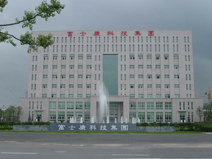Over the past decade in California, we in the workforce community have been engaged in an ongoing debate regarding the impacts of globalization on California employment. Which manufacturing jobs are being “outsourced” to other countries, and which service jobs; and how is this outsourcing changing in California over time? Which manufacturing and service jobs are being created in California by the outsourcing process? What should be the response, if any, of workforce programs, private and public?
This past weekend a lengthy article in the New York Times on one of California’s premier employers, Apple, should add to this debate. Though the article contains familiar pro and con quotes from economists on globalization, it is worth reading in its description of the relation between Apple and the Chinese manufacturer, Foxconn, and the ability of Foxconn to produce over 10,000 iPhones a day within four days of receiving the order.
 As related by reporters Charles Duhigg and Keith Bradsher, in 2007, a month before the iPhone was scheduled to debut, Steven Jobs decided the plastic screen used in the iPhone prototype needed to be replaced by a glass screen that could not be scratched–one more example of Jobs’ commitment to perfection.
As related by reporters Charles Duhigg and Keith Bradsher, in 2007, a month before the iPhone was scheduled to debut, Steven Jobs decided the plastic screen used in the iPhone prototype needed to be replaced by a glass screen that could not be scratched–one more example of Jobs’ commitment to perfection.
There was a time in the 1990s and early 2000s when Apple did have manufacturing facilities in California, in Elk Grove near Sacramento, producing the iMac and other products. But over the past decade Apple has turned to manufacturing firms in other countries, in part for costs and in equal or greater part to meet time and scale needs.
For the time-sensitive redesign of the iPhone, Apple turned to Foxconn. Within days, Foxconn was able to begin production of the iPhone with glass screen instead of plastic screen. Within three months, Apple had sold one million iPhones.
 Our leading California historians, Kevin Starr and D.J. Waldie have described the enormous manufacturing might of California in the 1940s and 1950s, when our aerospace and defense plants were employing thousands of workers in a single location. But nothing compares to the scope of Foxconn City, with its 230,000 employees. The reporters describe the company barracks that house over 35,000 employees as well as the 300 security guards hired to direct foot traffic.
Our leading California historians, Kevin Starr and D.J. Waldie have described the enormous manufacturing might of California in the 1940s and 1950s, when our aerospace and defense plants were employing thousands of workers in a single location. But nothing compares to the scope of Foxconn City, with its 230,000 employees. The reporters describe the company barracks that house over 35,000 employees as well as the 300 security guards hired to direct foot traffic.
The manufacturing sector is very much alive in California. The most recent state employment numbers, released by EDD last Friday for December 2011, show the manufacturing sector with 1,241,000 payroll jobs. This is down slightly from 1,245,400 payroll jobs in December 2010, yet still a vibrant part of the California economy.
But there are major types of manufacturing that will not be based in California. When they meet in February 2011, Steven Jobs tells President Obama that the jobs manufacturing iPhones (70 million sold in 2011) or other Apple products will not return to Elk Grove or elsewhere in the United States. The descriptions of Foxconn City in this article show why, as would descriptions of other manufacturing plants in Asia and their supply chains.
This article focuses on the manufacturing employment, which is important, but only one part of the iPhone employment story. Due to the success of its products, Apple now employs 43,000 workers in the United States. Its success has led to jobs being generated in California and the United States in industries—finance, business, real estate, marketing, sales—that service the iPhone, the iPad and other Apple products. Further, its success has led to former Apple employees who have started their own businesses in the Silicon Valley, and generated jobs not only for themselves, but for many others. In a future post, I’ll have more to say on this entrepreneurial dynamic.

